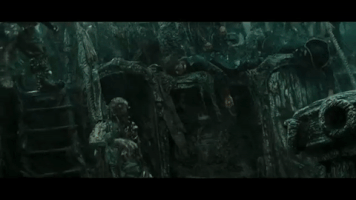Hello,
I am sort of new to this. I had a saltwater tank a few years ago but had to move so I sold it all. During that time it was an easy experience of just adding a few fish and changing the water. Never had any issues. So I didn't think about any quarantine procedures this time.
About 4 weeks ago decided to get a tank again. Got a 20 gallon long to see if I stick with this for a while. Then upgrade to a big tank. Bought saltwater from LFS and got it running. A few days later added fritz turbo start and 2 clownfish. On Monday I noticed what appeared to be white stringy poop. I believed it to be internal parasites and read prazipro would do the trick. I added prazipro Monday evening. Things seemed ok Tuesday. On Wednesday I noticed the smaller clown breathing rapidly and died later on Wednesday.
Yesterday I noticed the white stringy thing on the remaining clown. From what I read after 72 hours prazipro breaks down. So I dosed it again. I noticed shortly after my cleaner shrimp seemed to be weak and inactive. I was nervous I hurt him so I did a 30% water change to try and bring things back in check. He is doing good today. However the clown seems slow and sometimes tilted.
I don't have any extra tanks or equipment so I was hoping to treat in the main tank. Not sure if I need to get another tank and treat with copper? I also don't have my own RODI yet but have some more water on hand.









Aquarium Parameters:
Aquarium type: Fish-only and inverts
Aquarium water volume 20 gallon
Filtration type aquaclear 110 HOB
Lighting room lighting
How long has the aquarium been established? 3-4 weeks
Water quality (be sure to indicate what measurement units you are using)
Temperature 78f
Salinity / specific gravity 35 ppm
Ammonia nothing on alert badge
In-depth information:
Have you lost any fish to this problem yet? Yes
Are any invertebrates affected? No
Are the affected fish still feeding not much but a little
I am sort of new to this. I had a saltwater tank a few years ago but had to move so I sold it all. During that time it was an easy experience of just adding a few fish and changing the water. Never had any issues. So I didn't think about any quarantine procedures this time.
About 4 weeks ago decided to get a tank again. Got a 20 gallon long to see if I stick with this for a while. Then upgrade to a big tank. Bought saltwater from LFS and got it running. A few days later added fritz turbo start and 2 clownfish. On Monday I noticed what appeared to be white stringy poop. I believed it to be internal parasites and read prazipro would do the trick. I added prazipro Monday evening. Things seemed ok Tuesday. On Wednesday I noticed the smaller clown breathing rapidly and died later on Wednesday.
Yesterday I noticed the white stringy thing on the remaining clown. From what I read after 72 hours prazipro breaks down. So I dosed it again. I noticed shortly after my cleaner shrimp seemed to be weak and inactive. I was nervous I hurt him so I did a 30% water change to try and bring things back in check. He is doing good today. However the clown seems slow and sometimes tilted.
I don't have any extra tanks or equipment so I was hoping to treat in the main tank. Not sure if I need to get another tank and treat with copper? I also don't have my own RODI yet but have some more water on hand.
Aquarium Parameters:
Aquarium type: Fish-only and inverts
Aquarium water volume 20 gallon
Filtration type aquaclear 110 HOB
Lighting room lighting
How long has the aquarium been established? 3-4 weeks
Water quality (be sure to indicate what measurement units you are using)
Temperature 78f
Salinity / specific gravity 35 ppm
Ammonia nothing on alert badge
In-depth information:
Have you lost any fish to this problem yet? Yes
Are any invertebrates affected? No
Are the affected fish still feeding not much but a little




















